Occupational Safety Training for the Telecommunications Industry
99,000 ₫
Note: The above price is calculated for one person, the price may fluctuate depending on the number of trainees attending the course and market movements. For more accurate pricing support, please refer to the price list or contact our consulting staff directly.
The Telecommunications Occupational Safety Training course is a training program providing Group 3 occupational safety knowledge. The course will raise awareness of how to prevent workplace accidents during work for trainees. Accordingly, the occupational safety training content follows closely Article 18 Decree 44/2016/ND-CP.
Table of Contents
Toggle1. Overview of the telecommunications industry
a. What is the telecommunications industry?
- The telecommunications industry is the sector related to the remote communication and transmission of information, including the design, construction, configuration, operation, and maintenance of communication systems, computer networks, the internet, mobile phones, television, and radio.
- This industry plays a crucial role in connecting and exchanging information among individuals, organizations, and businesses worldwide. Technologies in the telecommunications industry are often applied in fields such as mobile telecommunications, computer networking, television, the Internet of Things (IoT), satellite communications, and remote control and monitoring systems.

b. Types of machinery and equipment in the telecommunications industry
In the telecommunications industry, there are many types of machines, but the following are the common types of machinery and equipment:
- Telecommunication signal meters: used to test telecommunication signals over coaxial cable, fiber optic cable, or radio waves. Telecommunication signal meters can measure frequency, frequency deviation, voltage, noise, and signal attenuation level.
- Network reliability meters: used to measure the reliability of a telecommunications network by detecting errors or incidents on the network. Reliability meters are often combined with network monitoring software to track network activity and identify potential problems.
- Fingerprint time clocks: used to manage employee timekeeping in telecommunications companies. Fingerprint time clocks can accurately determine the clock-in and clock-out times of each employee and help minimize errors in payroll calculation.
- Transceivers: used to transmit data over the telecommunications network. These devices include transmitters, receivers, modems, and routers.
- Data storage devices: used to store and manage data for telecommunications companies. Data storage devices include servers, hard drives, tapes, floppy disks, and USBs.
- Technical support equipment: includes tools and equipment that assist technicians in installing, repairing, and maintaining telecommunications equipment. Technical support equipment includes screwdrivers, knives, multimeters, soldering irons, wire cutters, wire length meters, and wire pullers.

c. Typical enterprises in the telecommunications industry
Typical enterprises in the telecommunications industry in Viet Nam include:
- Viettel: The leading telecommunications company in Viet Nam, operating in the fields of telecommunications, internet, television, software, and digital services.
- VNPT: One of the largest telecommunications companies in Viet Nam, providing telecommunications, internet, television, postal, and value-added services.
- FPT Telecom: One of the leading telecommunications companies in Viet Nam, providing internet, television, broadband, and related services.
- MobiFone: A major telecommunications company in Viet Nam, providing mobile telecommunications, internet, and value-added services.
- Vinaphone: A major telecommunications company in Viet Nam, providing mobile telecommunications, internet, and value-added services.
- CMC Telecom: One of the leading telecommunications companies in Viet Nam, providing telecommunications, cloud, and related services.
- Viettel IDC: A subsidiary of Viettel, specializing in providing cloud storage services, server rentals, and information technology solutions.
- VNG Corporation: One of the leading technology companies in Viet Nam, operating in the fields of online games, social networking, online services, and mobile application development.
d. Specific jobs in the telecommunications industry
Specific jobs in the telecommunications industry may include:
- Network Engineer: Designs, deploys, configures, maintains, and repairs network systems, including local and wide area networks.
- Software Engineer: Designs, develops, and tests software applications for mobile devices, computer systems, and other devices.
- Hardware Design Engineer: Designs and develops telecommunications devices such as mobile phones, GPS devices, Wi-Fi transmitters, terminal devices, etc.
- Security Engineer: Designs, deploys, and maintains network and software security systems, including authentication, access control management, data encryption, and monitoring.
- Systems Engineer: Manages, maintains, and updates telecommunications systems, including servers, storage systems, databases, and other devices.
- Communications Engineer: Develops communication and marketing strategies to promote products and services, including advertising on television, radio, newspapers, and social media.
- Telecommunications Electronics Engineer: Designs and develops telecommunications electronic products, including integrated circuits, components, and other electronic products.
- Telecommunications Technician: Installs, repairs, and maintains telecommunications systems, including telephone equipment, computers, and other devices.
- Business Specialist: Develops business strategies, builds customer relationships, and seeks new business opportunities in the telecommunications industry.
2. Overview of the occupational safety training course for the telecommunications industry
a. What is occupational safety training for the telecommunications industry?
- Occupational safety training for the telecommunications industry consists of sessions to raise awareness about preventing occupational accidents for workers. Accordingly, workers who work directly in the telecommunications industry are subjects belonging to group 3.
- The occupational safety training course will help workers recognize and avoid hazards, and limit the risks of occupational accidents while working.
REGISTER FOR OCCUPATIONAL SAFETY TRAINING SERVICE
b. Training duration
Initial safety training duration
- The total training duration is at least 24 hours, including examination time.
- 8 hours of theory on the system of policies and laws on occupational safety and health.
- 8 hours of theory on basic knowledge of occupational safety and health.
- 4 hours of theory on specialized training content.
- 2 hours of practice on specialized training content.
- 2 hours for the final theoretical examination to conclude the course.
The safety training center will schedule the time into multiple training sessions depending on the scheduling for employees. However, there will typically be 6 training sessions, the course will take place over 3 days, provided that the manufacturing enterprise can arrange for continuous study time.
Periodic safety training duration
- Before the occupational safety card expires, if workers wish to have it reissued, they must undergo a periodic occupational safety training course, with the periodic safety training duration being at least 50% of the initial safety training duration.
Explanation: the total duration of periodic occupational safety training is at least 12 hours, including examination time. After completing the periodic training course and passing the examination, workers will be reissued or have their occupational safety card extended.
c. Content of the training course
| No. | TRAINING CONTENT | TRAINING DURATION (HOURS) | |||
| Total | Including | ||||
| Theory | Practice | Examination | |||
| I | System of policies and laws on occupational safety and health | 8 | 8 | 0 | 0 |
| 1 | Overview of the system of legal documents on occupational safety and health. | 6 | 6 | ||
| 2 | System of technical standards and regulations on occupational safety and health. | 1 | 1 | ||
| 3 | Specific regulations of state management agencies on occupational safety and health when constructing, expanding, or renovating facilities for manufacturing, using, preserving, storing, and inspecting machines, equipment, materials, and substances with strict requirements on occupational safety and health. | 1 | 1 | ||
| II | Basic knowledge of occupational safety and health | 8 | 8 | 0 | 0 |
| 1 | Basic knowledge of hazardous and harmful factors at the workplace. | 4 | 4 | ||
| 2 | Methods for improving working conditions. | 1 | 1 | ||
| 3 | Safety culture in manufacturing and business. | 1 | 1 | ||
| 4 | Rights and obligations of employers and employees; policies and regulations on occupational safety and health for employees; functions and tasks of the safety and health network. | 1 | 1 | ||
| 5 | Internal rules on occupational safety and health, safety signs, and instructions; use of safety equipment and personal protective equipment; skills in first aid for occupational accidents, prevention of occupational diseases. | 1 | 1 | ||
| III | Specialized training content | 6 | 4 | 2 | 0 |
| General knowledge of machines, equipment, and substances that generate hazardous and harmful factors; analysis, assessment, and management of risks related to occupational safety and health; safe work procedures with machines, equipment, and substances with strict requirements on occupational safety and health. | 6 | 4 | 2 | ||
| IV | Examination of safety training content at the end of the course | 2 | 2 | 0 | 0 |
| Total | 24 | 22 | 2 | ||
See more training content for the 6 groups
d. Occupational safety card
After completing the occupational safety training course and passing the examination, the worker will be issued an occupational safety card (in practice, often called a group 3 occupational safety certificate).
The group 3 safety card will clearly show information such as: full name, date of birth, specific job and working environment. It also includes the training period, a red seal, and a signature confirming completion of the training course.
According to the regulations for issuing safety cards stated in Clause 2, Article 24 of Decree 44/2016/ND-CP, it is divided into 2 cases:
- In the case where the employer and the employee have an employment contract, the employer must sign, stamp, and seal across the border on the safety card for the trained person in group 3 after they have undergone training from an occupational safety training unit and passed the examination.
- In the case where the worker is freelance, seasonal, and does not have an employment contract, the training unit must sign, stamp, and seal across the border on the safety card for the worker after they have undergone training from the occupational safety training unit and passed the examination.

3. Identifying hazards in the telecommunications industry
Hazards in the telecommunications industry can include:
- Impact of electromagnetic waves: Workers in the telecommunications industry can be affected by electromagnetic waves from signal transmission equipment, mobile phones, laptops, and other telecommunications devices. The impact of electromagnetic waves can cause health problems such as headaches, fatigue, nausea, and sleep disorders.
- Work accidents: Workers in the telecommunications industry often have to work on high equipment, on the roofs of buildings, or on utility poles. Accidents such as falls or electric shocks are very dangerous and can cause serious injury or even death.
- Toxic chemicals: Workers in the telecommunications industry may be exposed to toxic substances such as dyes, coolants, and other chemicals when performing repair and maintenance work on telecommunications equipment.
- Radiation poisoning: Workers in the telecommunications industry may have to work with devices that emit X-rays, gamma rays, or other types of radiation. If not properly protected, radiation poisoning can cause serious health problems.
- Other risks: Workers in the telecommunications industry may face other risks such as electric shock, being attacked by wild animals while working in hilly or mountainous areas, or being burned by contact with hot parts of telecommunications equipment.
4. Safety measures for the telecommunications industry
Safety measures for the telecommunications industry include:
- All individuals working in the telecommunications industry need to be trained in occupational safety and safety regulations. Additionally, they should regularly update their knowledge on the latest occupational safety practices to enhance their awareness and self-protection skills.
- Tools, machinery, and equipment must be periodically inspected and maintained to ensure user safety. In addition, protective equipment such as safety glasses, masks, gloves, and special footwear must be used when working.
- The division of labor, arrangement of equipment, and materials must comply with safety regulations to avoid unnecessary accidents. If necessary, safety protection measures such as barriers, warnings, and safety locks must be installed.
- New employees must be recruited based on criteria of skill and qualifications, along with the ability to work safely. Good management policies are needed to supervise and ensure employees’ compliance with occupational safety regulations.
- Build an occupational safety culture that makes everyone working in the telecommunications industry always prioritize and adhere to safety regulations. This is achieved through training programs, conferences, group activities, and the development of worker protection policies.
- Periodically organize work environment monitoring in factories and enterprises, collect and analyze factors harmful to workers, and then adjust to reduce the level of harm to prevent occupational diseases for them.

5. Accidents in the telecommunications industry
In the telecommunications industry, occupational accidents can occur for many different reasons, for example:
- Electronic devices, computers, mobile phones, and other types of tools are frequently used in the telecommunications industry. Improper use of equipment can lead to accidents such as health decline, injury, or fire and explosion.
- The telecommunications industry uses many specialized machines, equipment, and tools for the installation, repair, and improvement of the telecommunications network. Improper use of machinery, failure to perform regular maintenance checks, or using poor-quality equipment can cause serious accidents such as falling from heights or getting caught in equipment.
- The telecommunications industry requires the movement of a lot of equipment and materials, such as fiber optic cables, equipment parts, construction materials, etc. Improper movement, using unsafe means of transport such as trucks, containers, or ships can cause accidents.
- Jobs in the telecommunications industry require workers to work in hazardous environments, such as dust, toxic gases, noise, ultraviolet rays, and high or low temperatures. Long-term exposure to hazardous environments can cause serious occupational diseases.
6. Benefits of occupational safety training for the telecommunications industry
An Toan Nam Viet provides your business with wonderful benefits after completing the occupational safety training courses as stipulated in Decree 44/2016/ND–CP on Occupational Safety and Health for companies, factories, and enterprises.
- Workers can identify the potential risks of occupational accidents and thereby take preventive measures to avoid them.
- Your business can establish risk prevention measures in the manufacturing, operation, and maintenance processes.
- Minimize costs when safety risks in the workplace occur.
- Uninterrupted manufacturing processes will help increase labor productivity and product quality.
- Comply with occupational safety laws, avoiding legal risks.
- Create prestige and professionalism in all aspects, thereby enhancing the brand of your business.
The training courses of Nam Viet are the solution to protect against external factors affecting each individual, so they can avoid dangers that could lead to injury or, more seriously, death.
REGISTER FOR OCCUPATIONAL SAFETY TRAINING SERVICE
7. Customer feedback after completing the training course
An Toan Nam Viet has many years of experience in its mission to accompany many businesses in Viet Nam in general and in the southern provinces in particular. And that responsibility is something extremely precious to Nam Viet, which is why Nam Viet’s Occupational Safety Training is always focused on becoming more professional. The motivation for An Toan Nam Viet to grow strong to this day comes from both positive feedback and suggestions from businesses. Below is the feedback from our partners whom we have served.
Bac Nam E&C Construction Investment Joint Stock Company
“The first time using the service at An Toan Nam Viet, I was very surprised by the enthusiastic 24/7 support from the team of consultants. The organization of the class was very fast and convenient for our company. Thank you very much for Nam Viet’s service!”
Hoa Dat Construction and Trading Joint Stock Company
“Nam Viet’s service has helped us a lot in simplifying occupational safety and completing safety records for our work process. The consulting team is enthusiastic and timely in answering our questions. 5 stars for Nam Viet.”
See more customer interviews after using the service of An Toan Nam Viet
8. Occupational Safety Training Capability of An Toan Nam Viet
An Toan Nam Viet is a reputable and high-quality occupational safety training center in Viet Nam today. Our occupational safety training sessions are held continuously at manufacturing workshops, factories, or construction sites throughout the country (63 provinces in Viet Nam).
REGISTER FOR OCCUPATIONAL SAFETY TRAINING SERVICE
Occupational safety training license
- An Toan Nam Viet has been inspected and certified by the Department of Safety of the Ministry of Labor – Invalids and Social Affairs to be eligible for occupational safety and health training activities. This further strengthens our capability in providing occupational safety training.

Documents and lectures
- Before the occupational safety training materials are used in our OST training courses, they have been reviewed and censored to ensure that the lectures are always factually correct and effective when applied.
- The teaching methods of our instructors are standardized according to the teaching standards of An Toan Nam Viet. This method has been researched and concluded by experts in occupational safety and health training during the teaching process to bring the highest knowledge absorption efficiency for trainees.
Facilities
- Controlling factors in the classroom that affect the training process will increase teaching efficiency and the trainees’ knowledge absorption.
- Our facilities supporting the training course always provide spacious classrooms that meet standards for area, lighting, training equipment, etc.
9. Nationwide reputable and quality safety training center
At An Toan Nam Viet, we always prioritize our professional dedication to occupational safety training. For us, imparting the knowledge of self-protection to workers so they have a safe journey on their path of livelihood is contributing to nation-building.
To ensure the effectiveness of the training, we prepare carefully and meticulously, down to the smallest detail. From preparing tools, instruments, teaching equipment to curriculum, materials, sound, and lighting.
Our occupational safety training instructors are experts with many years of experience in the field. They even have research works on identifying hazards in all industries and how to prevent them.
The instructors’ lectures are drawn from practical experience and conveyed in the most vivid and easy-to-visualize way to the workers. These factors help the workers feel comfortable during the learning period and absorb our teaching knowledge well. Of course, the knowledge conveyed always closely follows Decree 44/2016/ND-CP.
From there, they grasp many measures to prevent dangers and how to protect themselves. At the same time, they can apply it most appropriately in their actual work.
Our safety training center is proud to be a reputable and professional provider of occupational safety training services with the following advantages:
- Competitive training costs but the quality of training is still guaranteed.
- Flexible training schedule according to the manufacturing situation of the company/enterprise.
- The procedure for issuing occupational safety training certificates is fast and in accordance with the law.
- Instructors are people with many years of experience in the profession.
- Classrooms are controlled for factors affecting the training process, increasing teaching efficiency and knowledge absorption of trainees.
- Lectures are compiled to be suitable for occupational safety work at businesses.
- An Toan Nam Viet works with dedication and professionalism to support customers accurately and quickly.

10. Refer to additional training materials for the telecommunications industry
- Set of occupational safety training materials
- Set of occupational safety training tests
- Multiple-choice test for occupational safety in the telecommunications industry
- Occupational safety materials for the telecommunications industry
- Presentation slides for occupational safety training in the telecommunications industry
1 review for Occupational Safety Training for the Telecommunications Industry
No comments yet

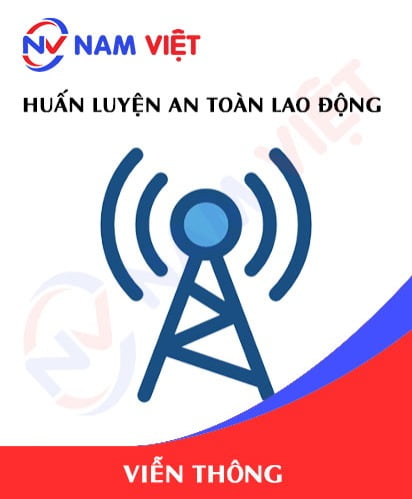





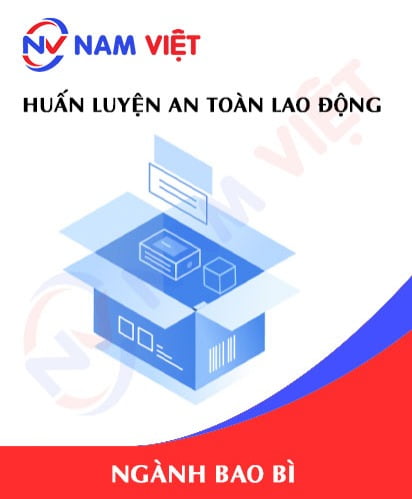
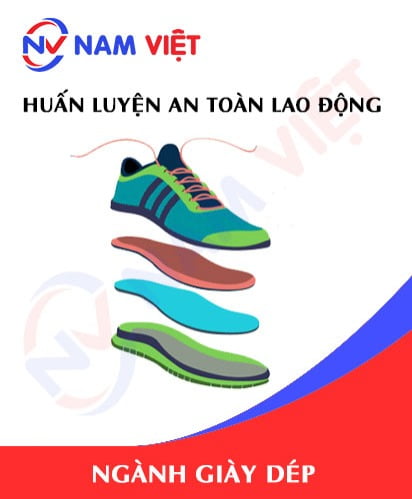


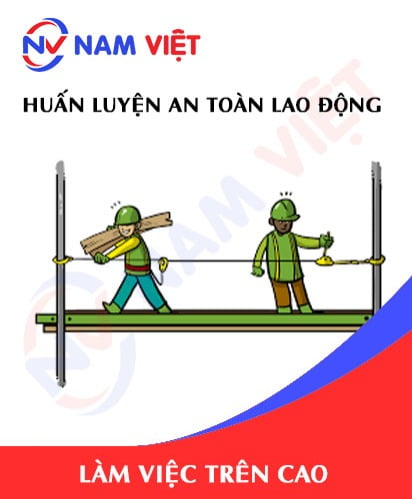


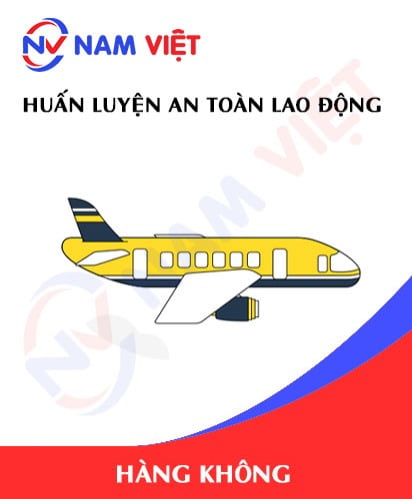
namchinh.haiphong341
dịch vụ tốt!